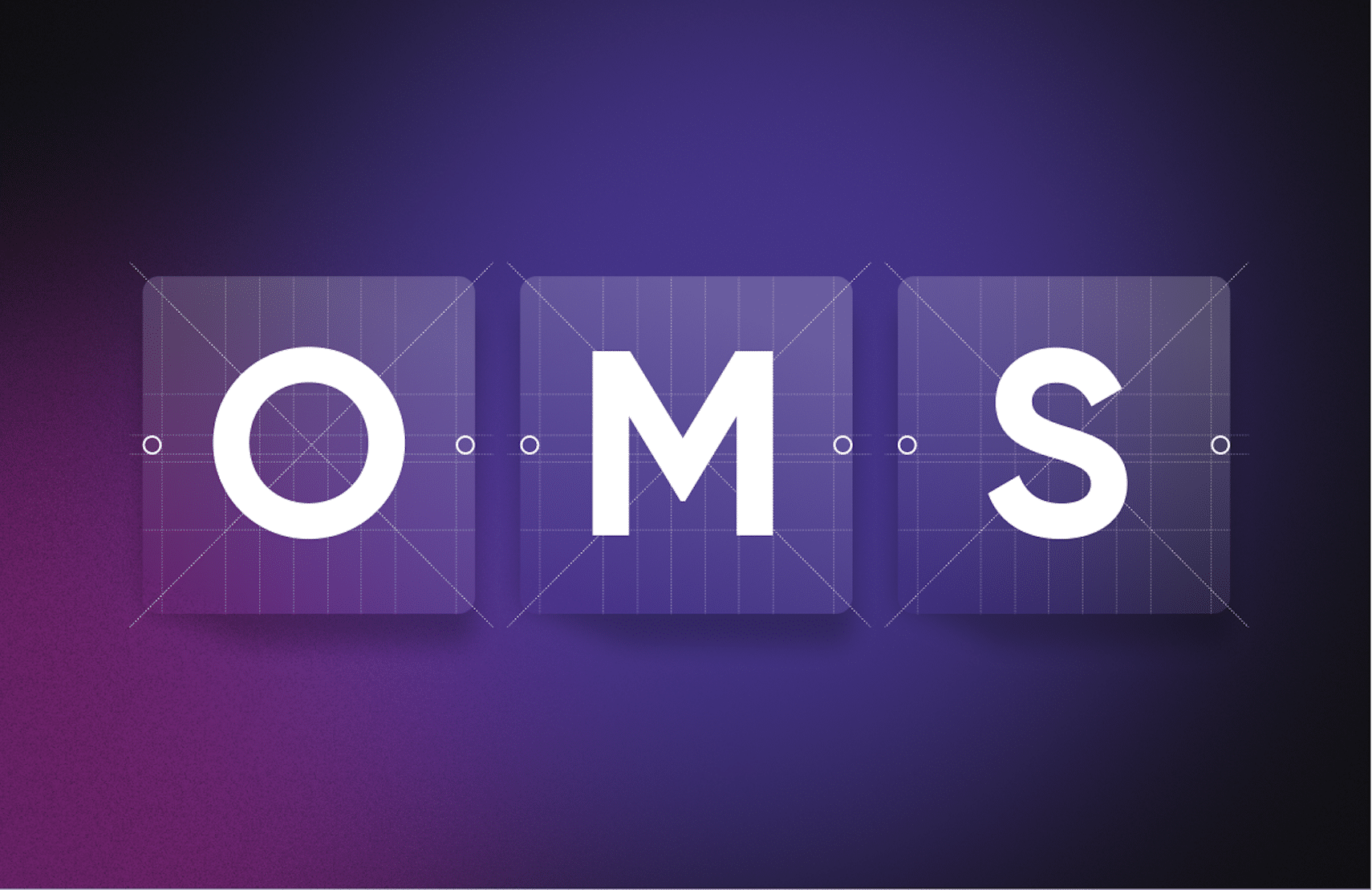OMS Meaning in E-commerce: A Guide

An Order Management System (OMS) is a centralized platform that orchestrates and manages all aspects of the order lifecycle, from placement to fulfillment.
Modern OMS solutions are crucial for omnichannel commerce, connecting all sales channels (online, in-store, mobile) to provide a unified view of orders and inventory.
An OMS helps deliver an ideal customer experience that is devoid of miscommunication and delays.
A robust OMS offers features like real-time inventory visibility, automated order routing, streamlined fulfillment processes, and improved customer service.
While other systems like ERPs and WMSs handle specific parts of the process, an OMS provides a holistic view and control of the entire order journey, often integrating with these other systems.
Updated 2/10/2025
Picture this: A customer places an order on your website. Another one orders through a major marketplace, like Amazon, and yet another snags a deal from your latest Instagram ad. Great news, right? But behind the scenes, chaos is brewing. Your inventory is spread across three warehouses, one brick-and-mortar store, and, yes, a pallet still sitting in a supplier’s facility. The system you’re relying on says the item is “in stock”—but doesn’t specify where. The nearest fulfillment center doesn’t have it, delays pile up, and soon, so do frustrated customer emails.
This story is all too common for e-commerce businesses operating in a multi-channel environment. The challenges are clear:
- Scattered inventory: Products stored in multiple locations with no unified, real-time view.
- Visibility gaps: Delayed inventory syncing leads to overselling or stock-outs.
- Suboptimal allocation: Inefficient distribution makes it harder to sell or fulfill orders efficiently.
Now, imagine this scenario amplified across hundreds and thousands of orders. The gaps between where customers shop and where inventory lives create inefficiencies that can’t be ignored.
Here’s where an Order Management System (OMS) helps businesses like yours take control of the entire order lifecycle. Without it, your team will be stuck manually juggling orders, inventory, and fulfillment across all your demand channels, leading to missed orders, inaccurate shipments, delays, and unhappy customers.
In this article, we’ll cover what an OMS is, its benefits, how to choose the right OMS for your business, the key features to look for, and how fabric OMS can help streamline your operations.
Let’s dive in.
What is an OMS?
Simply put, an Order Management System (OMS) is a software that orchestrates your entire order lifecycle, across every demand-channel and fulfillment location. It provides real-time inventory visibility for both businesses and customers, optimizing order fulfillment for efficiency across all demand channels—whether online or in-store.
Shoppers today buy across multiple demand channels—TikTok, Instagram, marketplaces, websites, and physical stores—and expect seamless service, including delivery, in-store pickup, and easy returns. But as a retailer, meeting these expectations isn’t easy.
The challenges are real: fragmented inventory, slow manual processes, and difficulty tracking orders in real-time, resulting in missed orders, stock-outs, and delays—leading to unhappy customers and lost sales.
An OMS solves these problems by centralizing and automating the order management process. It streamlines operations, reduces errors, and ensures inventory, orders, and fulfillment run smoothly, so you can stay ahead in a complex, fast-moving market.
And the numbers back it up. The global enterprise application software market is projected to double in size to $662 billion by 2028, demonstrating a consistent CAGR of 13.6% between 2023 and 2028. A recent survey showed that 47% of businesses rely on OMS solutions for inventory management, 29% use it for order tracking, and 16% for customer data management.
Benefits of OMS
OMS brings a lot to the table, offering powerful tools that streamline your operations and make it easier to meet customer expectations. Here’s how it works for you:
- Real-time inventory: With an OMS, you get a single, real-time view of your inventory across all demand channels and fulfillment locations. Whether your stock is in a warehouse, retail store, or on the way to a customer, you’ll always know exactly where it is. No more surprises.
- Smart order fulfillment: Forget about expensive split shipments and complicated logistics. The OMS uses AI insights to fulfill orders from the best possible location, cutting down on shipping costs and speeding up deliveries.
- Flexible store fulfillment: Want to offer Buy Online, Pick Up In-Store (BOPIS), or Ship From Store? An OMS makes it easy to launch and manage these services and fulfill with a simple mobile app that keeps your store team on track.
- Integrated ecosystem: The OMS integrates seamlessly with your entire commerce ecosystem, making it simple to scale to new brands, expand into new regions, or just run everything more efficiently.
What about ERPs?
If you’re already using an ERP, you might wonder why you need an OMS. While ERPs are broad systems designed to handle a range of business functions like finance, inventory, and HR, they’re not built to manage the entire order lifecycle.
An OMS specializes in real-time inventory tracking, smart order routing, and flexible fulfillment options like BOPIS, ensuring a smoother, more efficient order process. While ERPs are complex and costly to implement, an OMS is quicker to set up, more cost-effective, and designed to handle the specifics of order management that an ERP can’t.
Choosing the right OMS
When selecting the right OMS for your business, there are a few key factors that can make all the difference.
- Fast time to market: Look for an OMS with pre-built tools for quick implementation so you can meet customer expectations without complicated setups.
- Configuration: Choose an OMS that lets you configure fulfillment rules based on factors like location, cost, and split shipments. AI-driven insights can optimize rules and improve customer satisfaction.
- AI-first, user-friendly UI: Go for an OMS with an intuitive, AI-powered interface that drives efficiency and optimizes your operations with actionable insights to help you run your commerce business
- Superior TCO: An ideal OMS reduces IT costs, improves efficiency, and eliminates the need for costly infrastructure and data migrations, giving you better long-term savings.
Now that we’ve covered the key factors, let’s dive into the specific benefits of opting for a cloud-based OMS for your business.
- Flexibility: Cloud-based OMS can easily scale with your business. Whether expanding to new regions or adding features, cloud solutions adapt quickly, ensuring smooth growth without disruptions.
- Accessibility: With cloud-based OMS, teams can access critical data from anywhere, fostering collaboration and productivity no matter where your employees are located.
- Reduced IT costs: Cloud solutions minimize IT expenses by offering pay-as-you-go pricing, avoiding traditional infrastructure costs, and simplifying scalability.
Key features of OMS
A great OMS is loaded with essential features that ensure your order management runs effortlessly. Here’s a breakdown of the must-have capabilities you need to keep your business running smoothly:
- Real-time inventory: A solid OMS provides real-time visibility across all demand channels and fulfillment locations. This feature is crucial for knowing exactly where your inventory is at any given moment—no surprises, no delays.
- Order fulfillment logic: You need an OMS that lets you set custom fulfillment rules based on location, distance, and cost. This ensures that orders are fulfilled from the best possible location, reducing shipping costs and improving delivery speed.
- Store fulfillment services: In today’s world, offering flexibility is key. An OMS that supports services like Buy Online, Pick Up In-Store (BOPIS), or Ship From Store (SFS), along with an easy-to-use mobile app for store teams, is a must-have for meeting modern customer expectations.
- Preorders and backorders: The ability to manage preorders and backorders is essential. With a good OMS, you can ensure customers are informed about availability and delivery dates, even when items are temporarily out of stock.
- Core OMS: A top-tier OMS should make it easy to look up and edit orders, allowing your team to make adjustments quickly as customer needs change—whether it’s modifying a shipping address or adding an item to an existing order.
- Customer service: An efficient OMS streamlines customer service by enabling quick order creation, order edits, returns, and appeasements—helping your team resolve issues and maintain customer satisfaction.
- Prebuilt integrations, APIs, and webhooks: A good OMS integrates seamlessly with your entire tech stack. Prebuilt integrations, APIs, and webhooks connect your OMS to your eCommerce platform, payment systems, and shipping services, saving time and ensuring smooth operations.
Revolutionize your e-commerce operations with fabric OMS
To recap, a robust Order Management System (OMS) is crucial for boosting conversions, cutting fulfillment costs, and lowering total cost of ownership (TCO). By centralizing order tracking, inventory management, and fulfillment processes, OMS ensures efficiency and accuracy across all demand channels.
fabric OMS is designed to help businesses take control of their operations with features like real-time inventory management, AI-driven order fulfillment, and flexible store fulfillment options like BOPIS and Ship From Store. These features empower you to meet modern consumer expectations while streamlining workflows and improving margins. Plus, fabric’s API-first, composable architecture allows you to easily integrate and scale with your existing systems.
Ready to see how fabric OMS can transform your e-commerce operations? Get in touch with us today to learn how our solutions can streamline your processes, boost customer satisfaction, and drive growth. Or, book a demo to experience firsthand how our powerful OMS can optimize your entire order lifecycle and take your business to the next level.

Digital content editorial team @ fabric